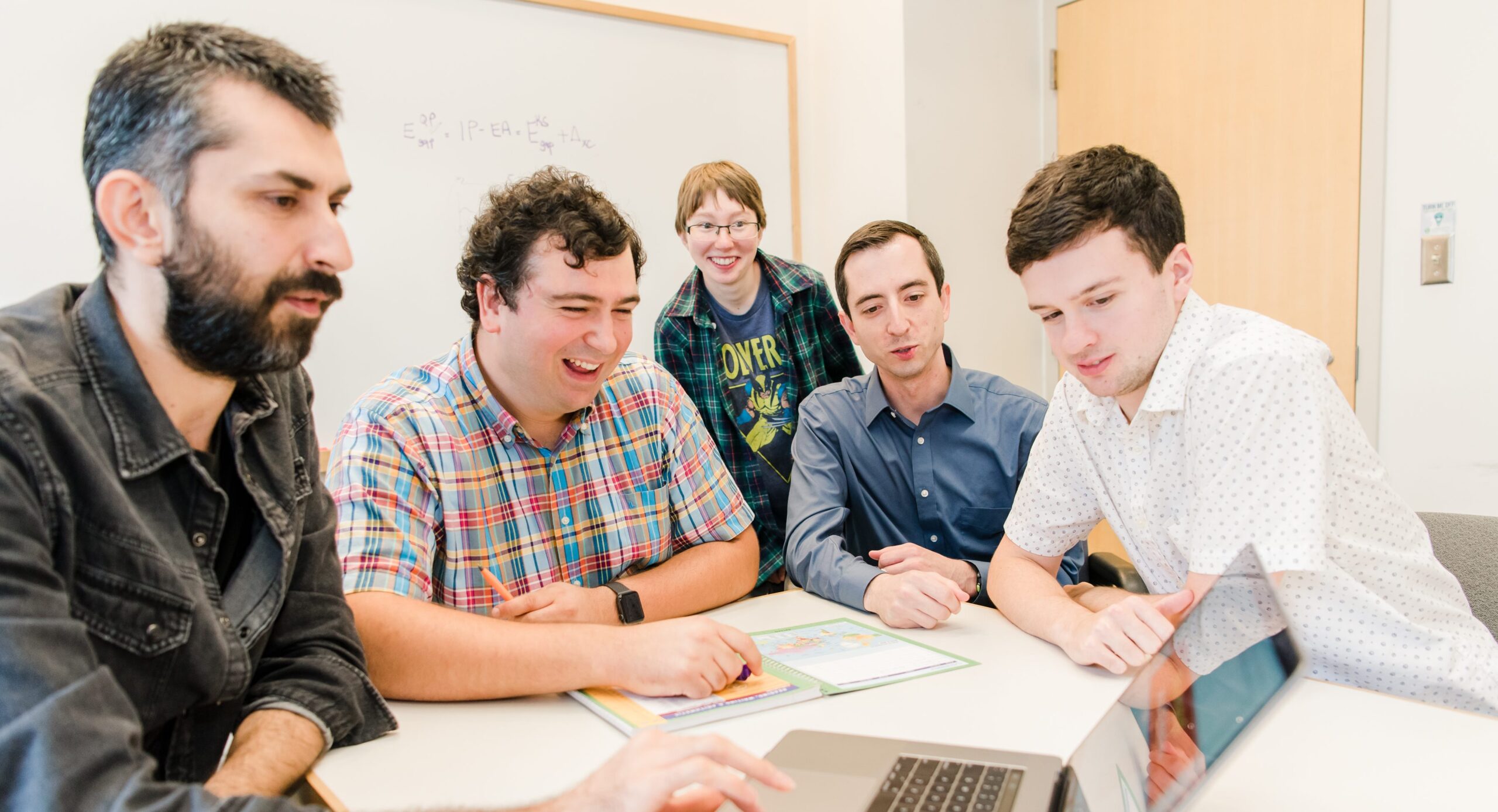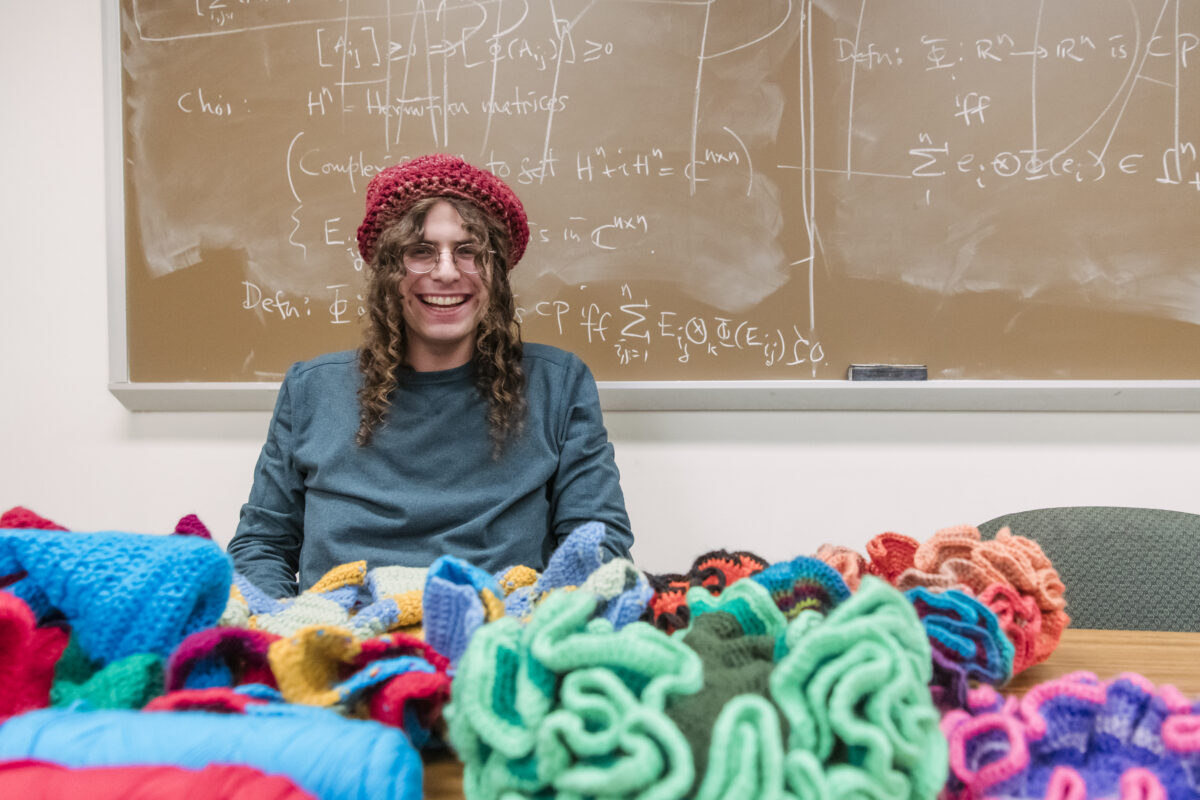Imagine a sheet that’s only one atom thick. It won’t keep you very warm, but single-atom-thick materials under development might soon do extraordinary things, like filter salt from water, collect and store solar energy, or protect you from a poisonous gas. These sheets are referred to as two-dimensional materials, and they’re Can Ataca’s specialty.
Ataca, a computational physicist at UMBC, and his collaborator Brenda Rubenstein, a physical chemist at Brown University, have just received a three-year National Science Foundation grant to develop new methods to speed up and reduce the cost of developing new 2D materials. Ataca and his lab members use supercomputers to model possible new 2D materials and predict their properties—magnetic, mechanical, electrical, optical, chemical, and more.
“We can predict the material’s properties before experimentalists can even synthesize it,” says Ataca.
That’s a good thing, because generating a single sample of one of these cutting-edge materials can cost up to $1 million and require highly advanced technical skills and equipment.
New tech, new methods
Modeling 2D materials is not entirely new. In the 1990s, researchers started with models that treated the chemical bonds between atoms like simple springs and completely ignored quantum mechanics, which become very important at small scales—like a one-atom-thick structure.
Why did those early models make assumptions that ignored quantum mechanics? Limited computing power was the culprit, but “even though these assumptions make life easier computationally, they come with lower accuracy,” Ataca explains.
Computers today are vastly more powerful than in the 1990s, and Ataca is taking advantage of that to develop more accurate methodology that accounts for quantum mechanics. Methods that incorporate quantum mechanics are currently available, but the new methodological framework Ataca’s lab is developing, called Quantum Monte Carlo, is an order of magnitude more accurate than existing quantum methods. Its results get extremely close to what experimental physicists would find in the lab with the real material.
The older methods are currently easier to implement because the computer code to run tests with them already exists: Enter a handful of parameters, click a button, and come back a day later to collect your results. The newer techniques that Ataca, Ph.D. students Daniel Wines and Gracie Chaney, and postdoctoral researcher Fatih Ersan are working to develop “are a much more hands-on process,” Ataca says. “In order to reach one result, you need to do around 100 different calculations, which require rigorous processing after each step.”
Next stop, applications
The current project is a proof-of-concept to show that the new methods work. “First, we are going to show the world that Quantum Monte Carlo is doing a better job. We’re trying to come up with a kind of recipe,” Ataca says. After that, they may collaborate with researchers seeking materials for specific applications.
Scientists who physically create these materials in their labs will rely on the results of models like Ataca’s to make major investment decisions in their labs, so it’s critical that the new method’s predictions can be trusted. To verify that results generated with the new code are accurate, the research team will compare them against existing experimental data for 2D materials.
“After we’ve done lots of this, and get the same results as the experiments, we are going to make these codes available to anyone,” Ataca says. He hopes that their work will eventually be used to create a wide variety of novel materials.
“With this methodology we can get the optimal properties of these materials with a very high accuracy,” Ataca explains, “so we can definitely say, ‘Hey, this material is good for photovoltaics [solar cells], that material is good for hydrogen generation, this material can bind this kind of poisonous gas.’”
By shortcutting the discovery process, the new methods could be a game-changer for developing not only 2D materials, but also any crystal structures or molecules. As Ataca says, “This could be the beginning of a new computational era.”
Image: Can Ataca, second from left, meets with some of his students. Photo by Marlayna Demond ’11 for UMBC.
Tags: CNMS, GradResearch, Physics, Research




